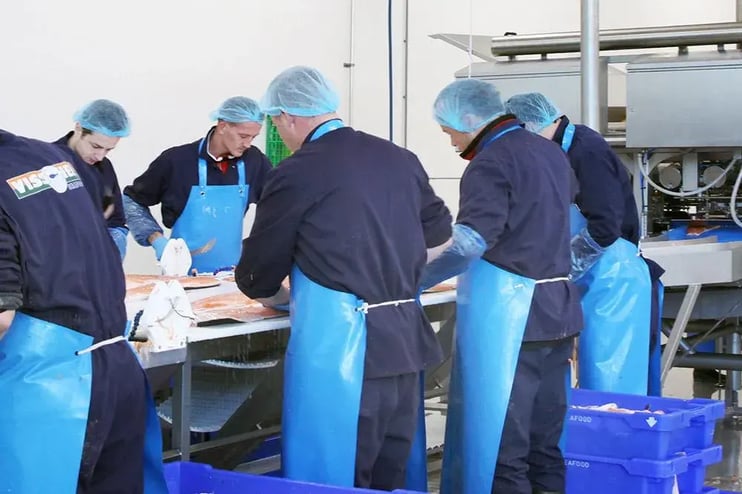Cleaning fish crates? Choose the correct crate washer for your organisation

Not all crates are the same. Also, they are used for various applications. That diversity means that not all crates can be cleaned in the same way. Would you like to clean fish crates for example? Then please consider the points below when choosing a good crate washer.
A fish crate is usually blue or white and is used mainly for the distribution of fish, crustaceans and shellfish. This type of crate has closed sides, is stackable and can also be nested. In other words they can be stacked or nested. When nested the empty plastic boxes are placed inside each other and a space saving of up to 70% can be achieved. This results in substantial savings on costs for return transport and storage.
Fish crates have drainage holes
A fish crate has four drainage holes. Therefore no water - or other liquids - remain in the crates. The slightly curved bottom of the crate also contributes to the outflow. With stacked fish crates, the liquid is drained sideways through the drainage holes and into the upper edge of the crate below. This system ensures that no liquid ends up in the crates below, thus guaranteeing quality, freshness and the colour of the fish in the crate.
The drainage holes are also very useful of course when cleaning the crates in a crate washer. The rinsing water runs out of the crates immediately.
Various measurements of the crate washer
Fish crates are available in various standard measurements. A crate with a capacity of 35 litres is 800 mm long, 450 mm wide and190 millimetres high. A fish crate with a 60 litre capacity is 270 millimetres high. The smaller variant (20 litres) has a standard measurement of 600 x 400 x 150 millimetres (l x w x h).
The crate's format determines the way in which it needs to be placed in the crate washer and also determines the number of crates that can be washed per hour.
Double washing zone in the crate washer
Because the soiling of the fish crates consists of protein and fat residues our advice is to purchase a crate washer that has two washing programmes: pre-wash and main wash. Removing proteins and fats requires two different ways of cleansing. Protein needs to be cleansed at a low temperature (approx. 30 to 40 degrees Celsius). At high temperatures these residues coagulate and this has a foaming effect. Fats however require a high cleansing temperature (50 to 65 degrees Celsius).
Choice of one or two tanks
Of course, the choice of a one or two tank washer depends on the available budget and the capacity required. Should the budget be limited or if relatively few crates need to be washed, then a crate washer with a main washing programme only (without a pre-wash programme) is also an option. But the user must be aware that the crates might then need a second wash to become really clean. Should you choose a one tank washer (cleansing without a pre-wash), then we advise to use a higher washing temperature and to increase the duration of the wash. To prevent the protein foaming, it is necessary to use a specific chemical.
Crate washer calculator
Would you like to know, quickly and simply, which crate washer suits your company best? Then please fill in the crate washer calculator and you will receive made to measure advise.
.webp)





